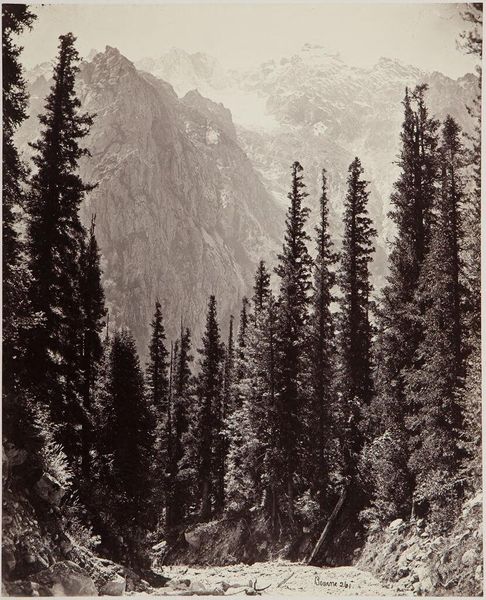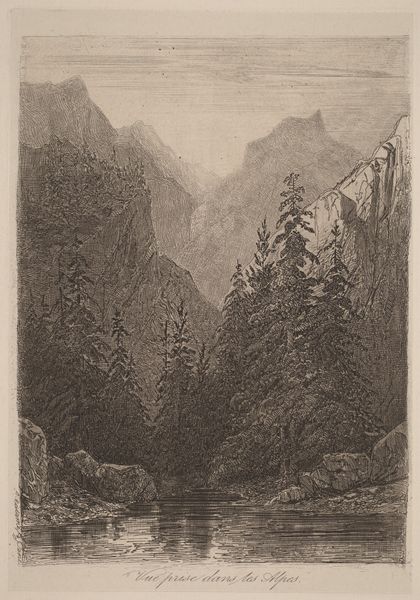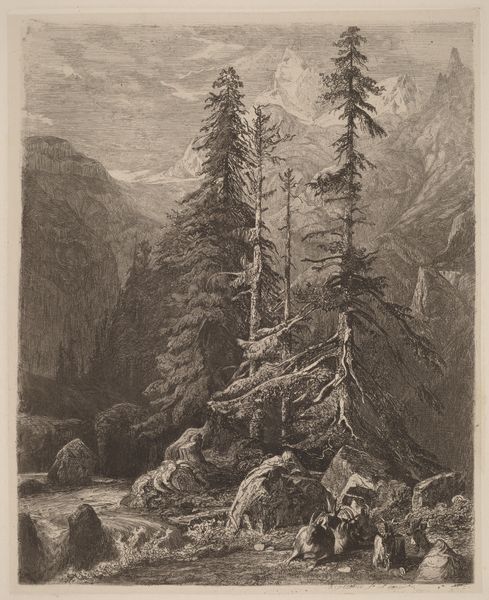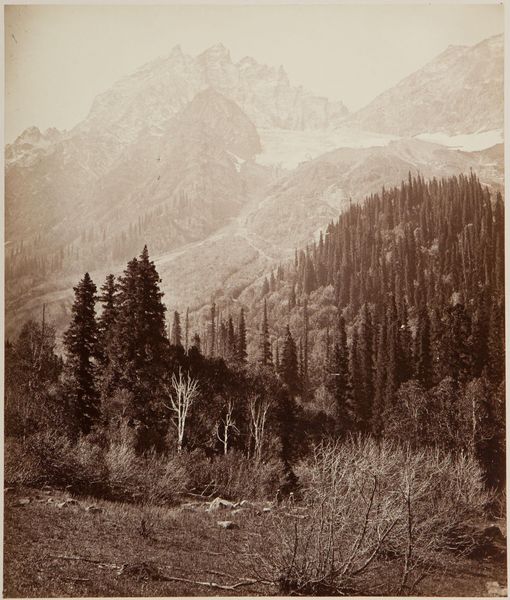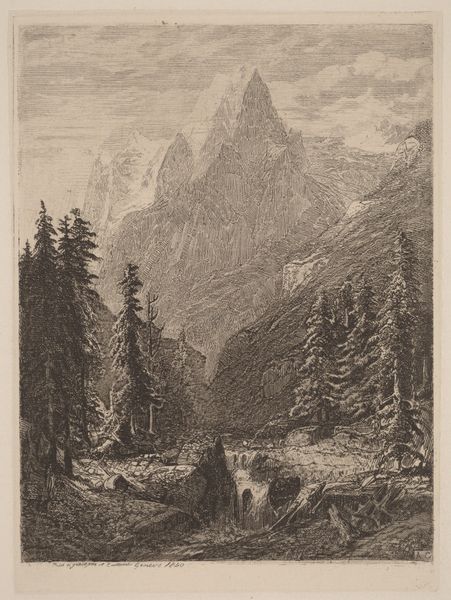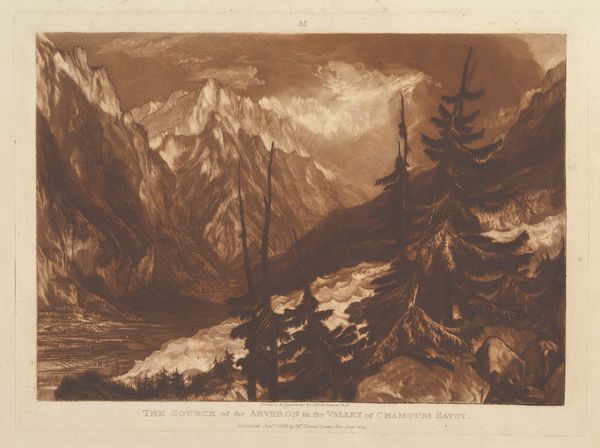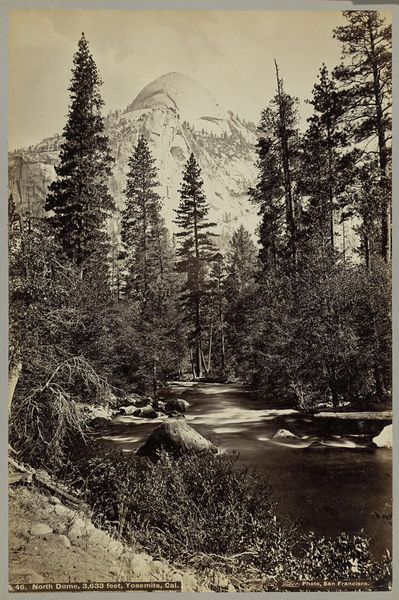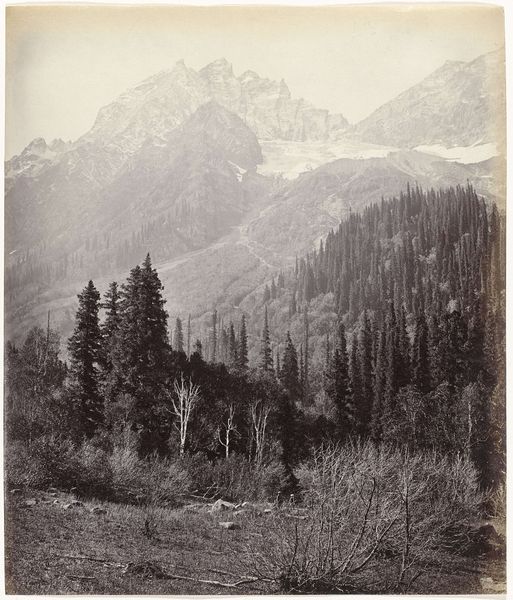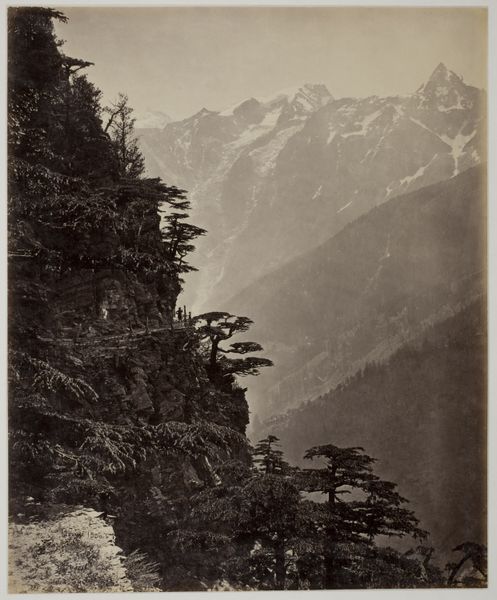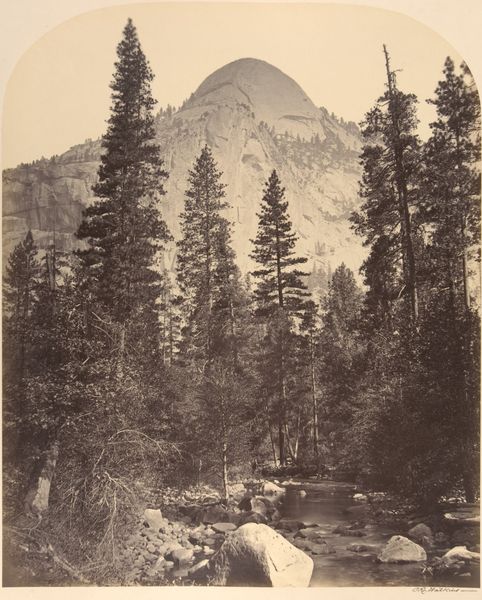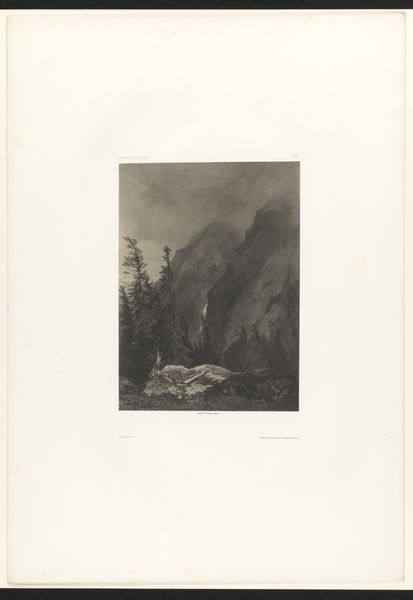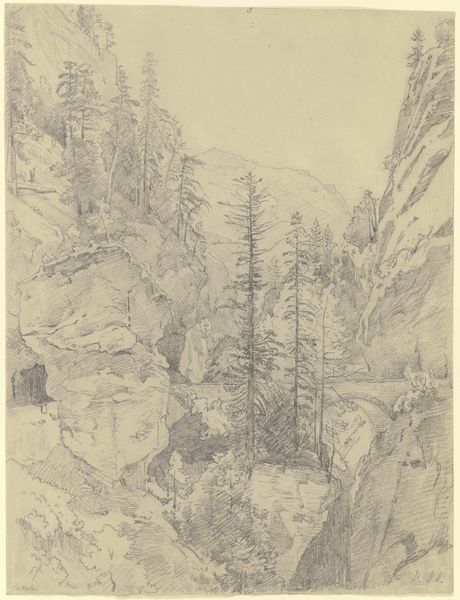
Dimensions: height 280 mm, width 232 mm, height 500 mm, width 350 mm
Copyright: Rijks Museum: Open Domain
Editor: So, here we have Samuel Bourne’s gelatin-silver print, “Berglandschap met sparren in Wanga Valley, India,” taken sometime between 1863 and 1864. It’s quite striking, a real exercise in tonal range. What's your read on this, particularly considering when it was made? Curator: Bourne's work is fascinating when viewed through the lens of colonial history and visual representation. Consider the context: mid-19th century, British Raj in full force. Photography like this served to document, categorize, and ultimately, lay claim to territory. Editor: Ah, a kind of visual annexation? The image *is* very meticulous. Curator: Precisely. The composition, the careful detail… it’s not just about aesthetic appreciation of landscape. Bourne was part of a larger colonial project, producing imagery that reinforced notions of British authority and knowledge. How do you think the Romantic style plays into this? Editor: I see what you mean! It's beautiful, yet the very act of "capturing" this untouched land... that aestheticizes dominion, I guess? Curator: Yes. These photographs were also circulated widely in Britain, shaping public perception of India. Consider who had access to these images and the power dynamics inherent in that. It isn't *just* a pretty mountain! Editor: This really makes me think about whose stories are told, and how they’re told. It's like, the photograph is beautiful on the surface, but knowing the context, you start seeing something different altogether. Thank you. Curator: Absolutely, it’s essential to view these images critically, questioning their production and consumption. We need to be careful about that. The social history changes the aesthetic impact entirely!
Comments
No comments
Be the first to comment and join the conversation on the ultimate creative platform.
